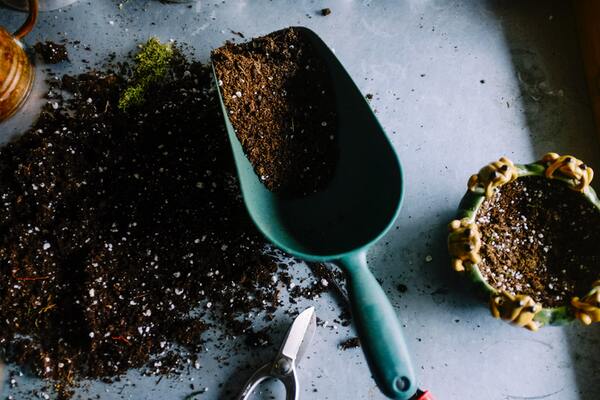
Although hydrangea care varies, all hydrangeas benefit from removing dead stems and wilted flowers each year. If cut in early spring, before flowering, this year's flowers will be sacrificed.
Also, as with oakleaf hydrangeas, any major pruning will result in fewer flowers next season. If cut in the fall, after flowering, the shoots may freeze, killing the stems and their buds.
It's important to prune them in the summer because if done in the spring, it could potentially cut dormant buds. Some hydrangeas bloom on old wood and others on new wood, so it's important to prune them correctly so as not to affect their flowering.
Most hydrangeas are pruned in the spring and their flower heads are left over the winter to protect the lower buds. If you don't prune hydrangeas, they can end up looking like a tangled mass of lignified stems, and the flowers become smaller and less showy.
Trimming your hydrangeas to reduce their height is not effective because they will grow back to their original size or even larger because the act of pruning encourages new growth. Regular pruning of hydrangeas helps maintain their shape and encourages new growth and brighter blooms.
In addition to making hydrangeas produce more flowers, pruning these shrubs annually helps keep them healthy if they are damaged by the weather and allows you to style them however you like. Hydrangeas do not require careful and regular pruning; just keep them healthy by removing dead wood and they will grow and bloom well.
Hydrangeas blooming on new wood can be safely pruned in late fall when the plants have gone dormant, or in early spring. Remontant varieties should be pruned in the same way as hydrangeas that bloom on old wood, meaning that you should only prune a few (if any) dead branches in the spring, once the plant begins to leaf out.
This is why we advise you to avoid pruning this type of hydrangea, short of removing any completely dead branches in the spring when the plant begins to bloom.
Oak-leaved hydrangeas don't need much pruning, but if you want to tidy up yours, get rid of the dead stems at the base in early spring.
For smooth hydrangeas, panicled hydrangeas (or PeeGee), and climbing hydrangeas, the best time to prune is in early spring when the plant is still dormant. For smooth hydrangeas, including the common Annabelle variety, some prefer to prune the plant near the ground in winter or early spring.
But for the vast majority of hydrangeas, pruning after July will likely result in fewer blooms the following summer.
Hydrangeas, however, can handle pruning (which, if done at the wrong time, can result in a lack of flowers), and sometimes you may or may not want to prune them a bit.
New woody hydrangeas should be cut in late winter before new growth begins, while old woody flowers need to be pruned shortly after the flowers have faded in late summer.
Both mophead hydrangeas and lace hydrangeas are considered large-leaved or large-leaved hydrangeas, so they can be pruned immediately after flowering by cutting off flowering shoots before the next shoot.
This type of hydrangea can also be cut into a tree shape as it has an upright posture. In summer it forms large oblong racemes of white or lemon green flowers at the tips of the branches, depending on the variety, which gradually turn pink or even reddish in autumn.
Hydrangeas of this type produce flowers from side shoots that can be pruned in autumn after flowering has ceased.
Oak-leaved and large-leaved hydrangeas, including varieties with pink and blue flowers, bloom from last year's buds. When pruning hydrangeas in the summer after the flowers have faded, allow time for the buds to stabilize the next year.
However, hydrangeas that bloom on old wood finish blooming so late that pruning after flowering doesn't give them enough time to grow back and form flower buds the following year.
Many new bigleaf hydrangeas are remontants, which means that not only do they bloom on old wood, but they also form more buds on new growth and bloom for a second time this season.
This makes them a better choice for colder climates, as new shoots will bloom even if the old stems are damaged by winter. These varieties rarely require extensive pruning, and winter pruning will prevent them from blooming the following summer.
Hydrangea, hydrangea, serrata, and oakleaf hydrangea are pruned gently by cutting off a few buds from the old flower head.
Hydrangea, serrata, and oakleaf hydrangeas are also lightly pruned in spring—just remove old flower heads and old crossed or long stems that look like mops and lace caps. Spike (H. paniculata) and smooth (H. arborescens) varieties of hydrangeas bloom on stems in the current season or "new wood".
When to Cut Hydrangea Varieties Where Flowers Appear Oak leaves (H. quercifolia) on old trees in summer, after flowering on old trees (H. serrata) in summer, curls on old trees after flowering (H. anomala subsp.)
When to prune these woody stem hydrangea does not matter Important, because if you avoid pruning varieties with large leaves when the buds are open, they will start to bend under their own weight, and as you'll notice, they can fall apart, especially under the extra weight of snow hydrangeas Prune where do I appear Flowerless large leaves (H. macrophylla) in summer, after flowering in old-leaf oak leaves (H. quercifolia) in summer, after flowering in old-growing corn on the cob (H. paniculata) in late winter until spring when it grows New growth smoothing (H. arborescens) late winter, spring before regeneration on new growth hill (H. serrata) summer, after flowering on old growth creeping (H. anomala subsp.
1. Register your company
2. Create a searchable listing
3. Connect with more clients
